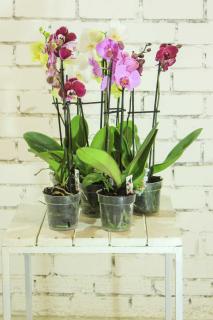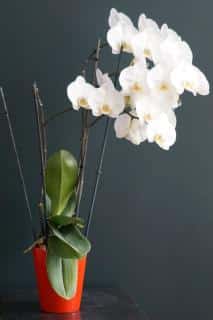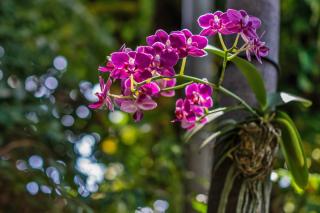

The orchid family is a surprising caste, seemingly bred from jewels of pure light. 750 different genuses, 20,000 species and thousands of hybrids!
Epiphyte orchids form the majority of the marvelous exotic beauties that enchant our homes with their curious shapes and delicate flowers.
Read also:

There are two types of growth patterns that orchids rely on. Some have a crawling rhizome from which swollen stems (pseudobulbs) emerge which bear flowers. Others grow new shoots and elongate themselves and bear flowers from elegant scapes. The latter of the two is probably the one from which the last orchid you got as a gift comes from!

And don’t choose a large pot for it where water might accumulate after watering: it won’t like it at all!
Actually, most often, these plants are sold in a clear plastic pot which is the best option for them as long as their roots don’t overrun them too much.
They like exposing their feet to the air! Place this pot on a saucer layers with glass or plastic marbles which are kept moist. Set this away from drafts and near a window: it needs a lot of light but, curiously, not direct sunlight.
This is due to its natural habitat: alongside the trunks of trees, there’s always a cover of shade above it.

During the rest phase, let it be, water only very little, don’t disturb it. Slowly start upping the amount of water it receives when the growing resumes. Be patient, keep it in a well-lit place, near a window. You’ll soon enjoy new blooms again.
by M.-C. D.